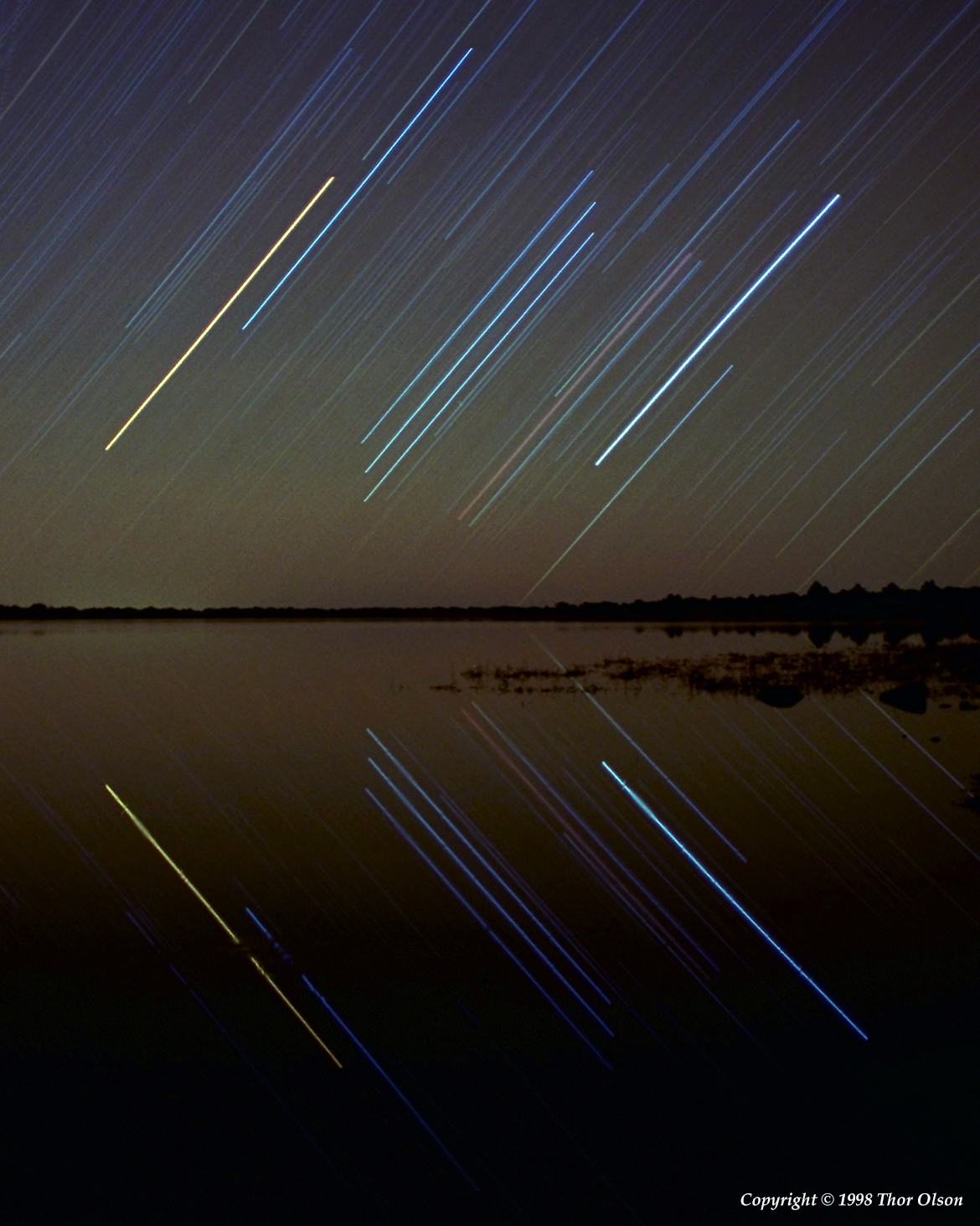
Kinnikinnik Lake, AZ, 14 Nov 1998
24mm Olympus lens at f/2.8, 1 hour exposure on Fuji 800 Superia
I made an expedition to northern Arizona in November of 1998. It was partly to find out what is involved in transporting photo and telescope guiding equipment to other parts of the world. Although cumbersome (I shipped a 90 lb crate ahead to be available when I arrived), it worked.
On the first night I found a remote site in the high desert. The map showed what looked like paved roads to a fishing lake. Evidently the map notations are different in Arizona; at least there were ruts where earlier vehicles had found their way.
The lake was remarkably calm and I marvelled at the darkness of the sky as I watched Orion rise in the east. I could hear wildlife including coyotes, owls, and yes, ducks. But they were far away and the water remained like a mirror. The sky glow here is not from aurora, but instead from distant Flagstaff, a city with an ordinance to use sodium vapor street lighting. The color is strongly yellow, but easily filtered and removed by the astronomical observatories that are hosted by the town. My film however captures all of it.
Although Orion is spread out into an unrecognizable form, he can be identified by the bright orange star, Betelgeuse on the left, and bright blue star Rigel on the right. The triad of belt stars makes a catscratch-like trail, and you may notice a distinctly red star that is even more obviously red in its reflection. This is the famous Orion nebula, a glowing region of gas and dust where new stars are being born.

